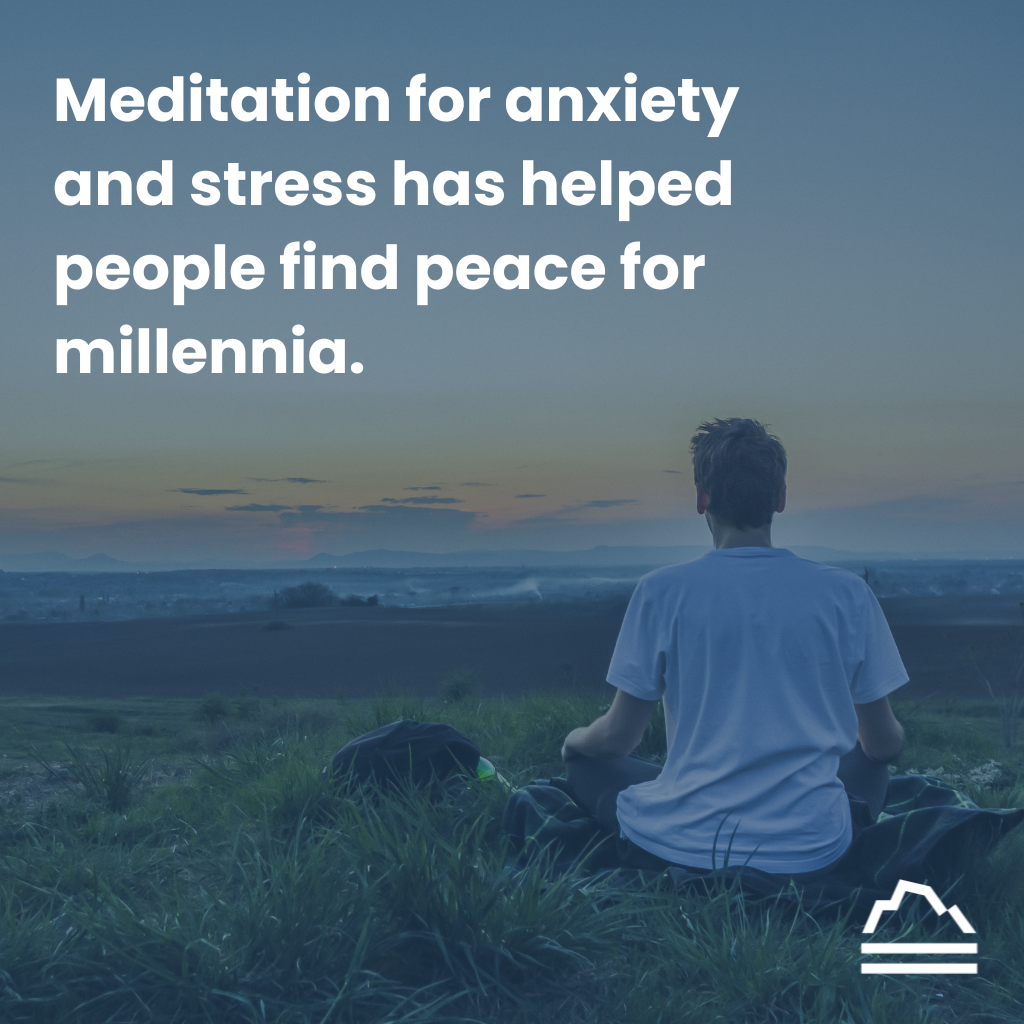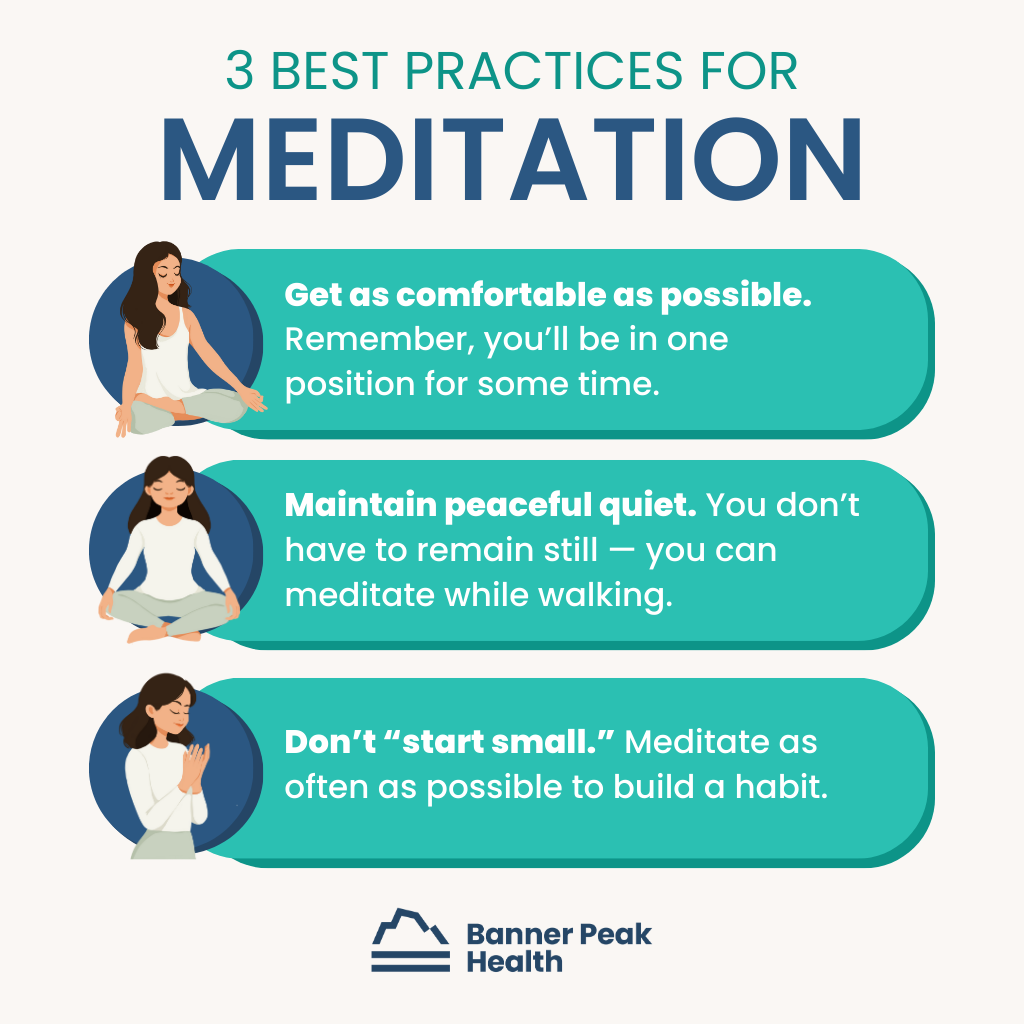These days, life moves too quickly.
Stress and anxiety have become so common that we often accept them as normal. When we do, we face dire consequences at work, in our personal relationships, and in our mental and physical well-being.
You don’t need to endure constant stress. There are solutions out there. Meditation for anxiety and stress is a great place to start.
Meditation Over Medication
One of the most effective solutions to chronic stress isn’t a quick fix, and it isn’t pharmaceutical. It involves a lifestyle change.
Meditation for anxiety and stress has proven effective for millions of people. Beyond lower stress levels, benefits include:
- Lower resting heart rate
- Lower blood pressure
- Better sleep quality
- Better immunity (especially if you have a disease affected by stress)
- Lower anxiety and depression
I can’t discount the emotional benefits of meditation, either. It improves patience and tolerance of others and boosts creativity and imagination.
How to Begin Meditation for Anxiety and Stress
Each type of meditation has a different goal: calming the mind, clarifying thoughts, finding emotional peace, creating connections, etc. Meditation was once a strictly spiritual practice, but today, it’s used more pragmatically.
Whichever type you decide to practice, the benefits are real. Decide on your goal, and match that with the type of meditation that’ll best help you reach your goal. These include:
- Mindfulness
- Transcendental Meditation
- Movement Meditation (Tai Chi or Yoga)
- Buddhist Meditation
For people with anxiety and depression, meditation that calms the mind may be challenging. Start with a meditation style that focuses on the heart rather than the mind.
For example, the following heart-focused meditation is often helpful for people with chronic anxiety who have trouble calming down:
Picture the inside of your heart as an egg. Imagine there’s a light inside that radiates through your body. The egg shatters, and the light of love and goodness extends to all the people you love. Then to all the people you know. Then to all people.
A heart-centered meditation for anxiety and stress can lead to deep inner peace.
First Steps
When you meditate, follow these best practices:
- Get as comfortable as possible. Remember, you’ll be in one position for some time.
- Maintain peaceful quiet. You don’t have to remain still — you can meditate while walking.
- Don’t “start small.” Meditate as often as possible to build a habit.
Two Calming Techniques to Try Today
There are two meditative practices you can start right away: autogenic training and box breathing.
Autogenic Training
I learned this in med school and still use it today. You’ll find it on most guided meditation apps.
It’s a remarkable technique my teacher combined with Pavlovian classical conditioning, and 30 years later, I still respond to the signals. Simply pinch your earlobe or press two fingers together when you listen to the guided meditation.
After enough repetitions, an unconscious association forms between that pinch and the relaxation the meditation accomplishes. Just like Pavlov’s dog and the bell, you’ll relax by simply pinching your earlobe.
Box Breathing
Practice box breathing when you’re feeling anxious. It activates your parasympathetic nervous system and curbs your vagal response. Soldiers even use it in combat.
Simple and effective, you breathe in four-second increments. Inhale, hold your breath, exhale, hold your breath, and repeat.
Final Thoughts on Meditation for Anxiety and Stress
Mental illness’s grip on society tightens each day. Meditation for anxiety and stress has helped people find peace for millennia. Try it yourself.
If you’re struggling, talk to your doctor or contact us at Banner Peak Health so we can tailor a solution for you.

Waheeda Hiller, MD
For over 20 years in Internal Medicine, Dr. Hiller has dedicated herself to providing unparalleled care to patients. She joined Banner Peak Health in 2023 as a concierge physician to better serve patients with the depth of thought, knowledge, and compassionate care they need to live the healthiest lives possible.





